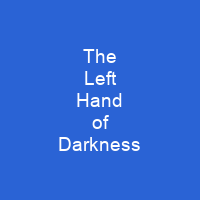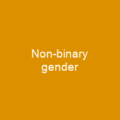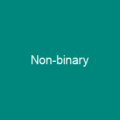The Left Hand of Darkness: A Journey Through Gender and Culture
Imagine stepping into a world where gender is fluid, where the very concept of masculinity and femininity dissolves like morning dew in the sun. This is the realm explored by Ursula K. Le Guin in her groundbreaking novel The Left Hand of Darkness. First published in 1969, this science fiction masterpiece has not only captivated readers but also challenged our understanding of human relationships and societal norms.
Ursula K. Le Guin: A Writer Ahead of Her Time
How did Ursula K. Le Guin come to write such a revolutionary book? Born into a family with deep roots in literature, Le Guin was influenced by her father’s anthropological work and her own interests in feminism, non-violence, and ecological awareness. Her writing often serves as a thought experiment, exploring the consequences of changing the world through metaphors and complex stories.
The Discovery of The Left Hand of Darkness
Until 1968, Le Guin had no literary agent, submitting her own work. However, Terry Carr, an editor who bought The Left Hand of Darkness, gave her the courage to ask for a representative. Virginia Kidd became her agent, and the rest is literary history.
A Fictional Universe: The Hainish Conception
What makes the universe in which The Left Hand of Darkness takes place so intriguing? In Le Guin’s fictional Hainish universe, humans did not evolve on Earth but on a planet called Hain. Humans colonized other planets through genetic experiments, including Terra and Gethen. The novel follows explorers from Hain as they try to re-establish a galactic civilization called the Ekumen.
The Ambisexual Gethenians
How do the Gethenians’ unique characteristics shape their society? On planet Winter (Gethen), inhabitants are ambisexual humans with changing sexual characteristics during a 24-day lunar cycle. Genly Ai, a human envoy from the Ekumen, is sent to convince these people to join their coalition.
The Protagonist’s Mission
What drives Genly Ai on his mission? Ai travels to Karhide, one of two major nations on Gethen, where he spends two years trying to persuade its government to join the Ekumen. However, Estraven’s prime ministership becomes strained due to his ambiguous behavior and handling of a border dispute with Orgoreyn.
The Journey Through Karhide
How does Genly Ai’s journey through Karhide unfold? After several months of traveling, Ai pursues his mission in Orgoreyn, which has invited him with an open mind towards joining. He reaches Orgoreyn’s capital, where he is welcomed by some council members but soon arrested and sent to a labor camp in northern Gobrin.
The Partnership with Estraven
What bond forms between Genly Ai and Estraven? Estraven, who had been watching over him from afar, breaks Ai out of the camp using his training with the Handdarata. They then embark on an 80-day journey across the ice sheet to return to Karhide. Along the way, they develop trust and learn to accept each other’s differences.
The Climax: The Collapse of Governments
How does their journey culminate? When they reach Karhide, Ai sends a radio transmission that leads to the collapse of governments in both Karhide and Orgoreyn, ultimately completing his mission. This pivotal moment not only achieves his goal but also highlights the novel’s themes of social relations and human expansion.
The Characters: A Cast of Complex Individuals
Who are some of the key characters in The Left Hand of Darkness? Therem Harth rem ir Estraven is a Gethenian from the Domain of Estre who serves as Prime Minister of Karhide until he is exiled for attempting to settle the Sinoth Valley border dispute with Orgoreyn. Argaven Harge XV, the king of Karhide, is described as ‘mad’ and has sired seven children but failed to produce a male heir. Pemmer Harge rem ir Tibe, Argaven’s cousin, becomes Prime Minister of Karhide when Estraven is exiled and opposes Ai’s mission.
Themes: Gender, Religion, and Loyalty
What themes does Le Guin explore in The Left Hand of Darkness? The novel delves into the absence of gender divisions leading to a society without constriction of gender roles. It also examines balance between light and darkness, a central theme of Taoism, contrasting it with Western cultural assumptions. Loyalty and betrayal are explored as Genly Ai tries to convince the Gethenian nations to join the Ekumen while dealing with planetary conflicts and nationalistic feelings.
Shifgrethor: A Concept of Social Authority
What is Shifgrethor, and how does it play a role in the novel? Shifgrethor represents social authority and equality in relationships. It comes from an old Gethenian word for shadow and means maintaining equality by respecting others. This concept prevents people from saving face in times of crisis, allowing them to communicate effectively.
The Narrative Structure
How is the novel structured? The narrative is framed as part of a report, with Ai narrating ten chapters in the first person and interspersing it with extracts from Estraven’s diary and ethnological reports. This non-linear structure features myths, legends, and multiple voices, making it a unique reading experience.
Adaptations: Bringing The Left Hand of Darkness to Life
How has the novel been adapted? BBC Radio 4 broadcast a two-part adaptation of the novel, starring Kobna Holdbrook-Smith as Genly Ai, Lesley Sharp as Estraven, Toby Jones as Argaven, Ruth Gemmell as Ashe, Louise Brealey as Tibe and Gaum, Stephen Critchlow as Shusgis, and David Acton as Obsle. This adaptation honored Ursula Le Guin’s 85th birthday and brought her work to a new audience.
The Left Hand of Darkness is more than just a science fiction novel; it is a profound exploration of human relationships, societal norms, and the fluidity of gender. Through its unique setting and characters, this book challenges us to question our own assumptions and consider alternative ways of living. As we continue to grapple with issues of identity and equality, Le Guin’s work remains as relevant today as it was when it first appeared in 1969.
You want to know more about The Left Hand of Darkness?
This page is based on the article The Left Hand of Darkness published in Wikipedia (retrieved on December 1, 2024) and was automatically summarized using artificial intelligence.







